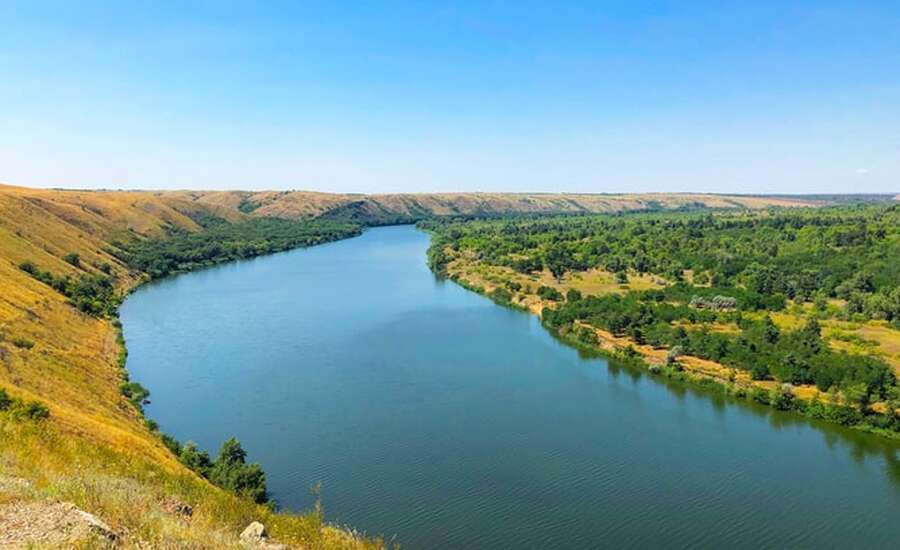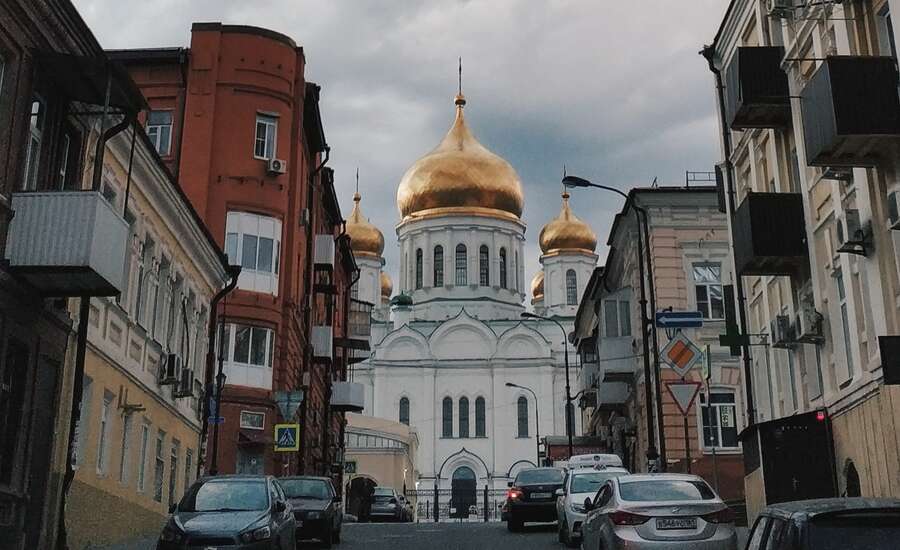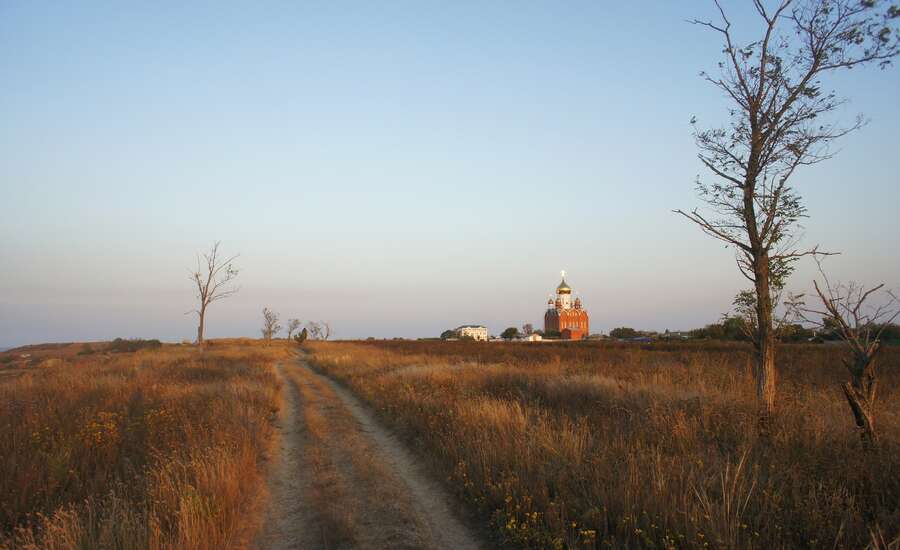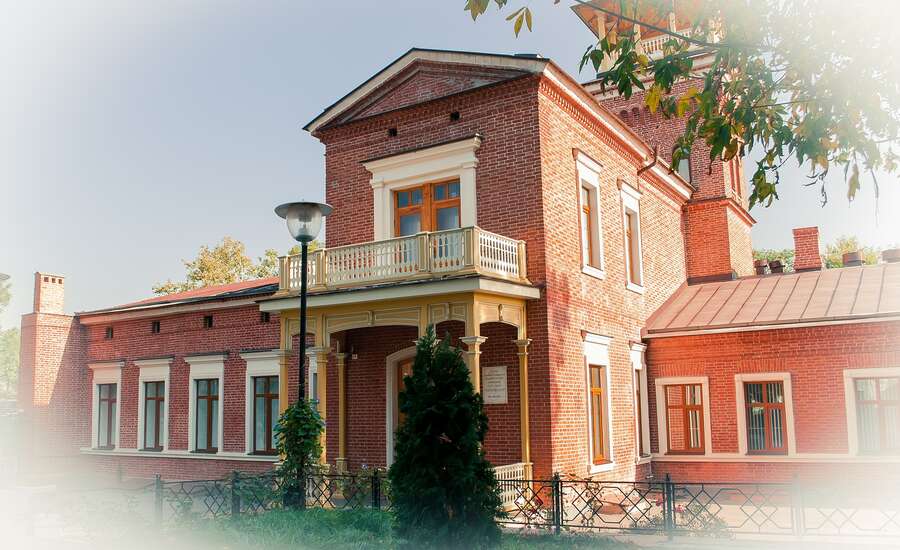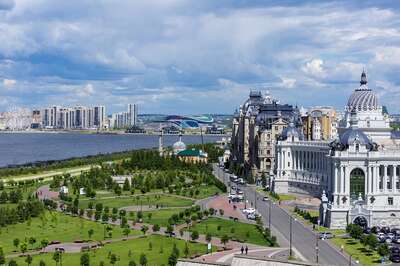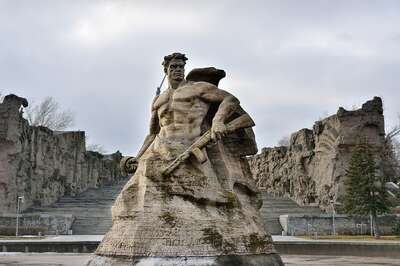South Federal District
Photo by Georgy Trofimov on Unsplash
What is There to See in the South of Russia?
- In general, the Don region is loved for its large varieties of fish. Enthusiasts will find everything they could wish for in the lakes and rivers of this flourishing district.
- Rostov-on-Don is known for its strategic and industrial significance. Apart from that it offers hearty food and good wines as well as a warm and hospitable atmosphere.
- The city of Azov is already more than 900 years old. Its Lore Museum, Gunpowder Cellar and the Museum of the Explorations of the Artic and Antarctic are well worth a visit.
- In Novocherkassk, Cossack history becomes tangible. In the city center, visitors can find the Ataman Palace and the Triumph Arch.
- Taganrog was founded by Peter the Great in 1698 as the base of the Russian Navy. It is also the home of Russia’s most famous playwriter Anton Chekhov.
- For more history and culture, check out Starocherkasskaya, which features over 150 monuments dedicated to Cossack history between 1700 and 1900.
Rostov-on-Don
Rostov-on-Don is a large, industrial, cultural and scientific center of Southern Russia. It was founded in 1749 and is situated in the South-East of the Eastern European plateau, on the bank of the Don River. The climate here is quite agreeable: winters are mild, with not a lot of snow. The average temperature in January is -2, -5° C. Spring is cold, but summer and autumn are very warm and dry. The average temperature in July is +23, +25°C. Being located in the crossroads of major roads, railroads, sea and river ports, not to mention airports, it is known as a great transport junction - "the gates of the Caucasus".
Rostov-on-Don is also one of the most beautiful cities in Southern Russia; it is famous for its architectural ensembles, theatres, libraries - and sport stadiums. Rostov-on-Don was founded when the Empress Elizaveta ordered the Ataman of the Don Army - Danila Efremov - to construct the border-line customs on the right bank of the Don river: from this point on, trade routes between Russia and other foreign countries were established.
Photo by express to Russia staff
In 1750, the Temernizkaya customs and port were founded just as Elizaveta Petrovna wanted, where the Temernik flows into the Don, near the natural boundary of Rich Kolodez. In 1761 construction of a fortress started. The fortress was given the name of St. Dmitry (1651-1709), Rostov's metropolitan (head church leader), who was canonized in 1757. At the end of 18th century, when the Black Sea region joined Russia, the fortress lost its strategic sense. In 1797 many people settled near the fortress, and consequently it was transformed into a town. In 1806 this town became known as Rostov-on-Don.
In the first half of 19th century Rostov-on-Don became a big trade city in Southern Russia. From the middle of the 19th century, its significance as an industrial and transport center of the region was also recognised. In 1846 the ironworks (today a ship-building factory called "Red Don") was built, and in 1859 the machine-building factory, which produced steam schooners, caldrons and pumps, began operation. In 1898 the agricultural-machine factory (today the "Red Aksay" factory) was built. By the beginning of the 20th century Rostov-on-Don had about 140 factories. The port became the largest in the south of the country (especially for the export grain, iron and wood industries). The most important industries became the machine-building, food, light and chemical industries. The factories here produce more than half of all the grain produced in Russia.
However it isn't just the industrial prosperity that attracts people to this region. That good ol' southern hospitality is abundant around the Don. An old Cossack proverb says: "Everyone is happy in a quest on the Don". Here you'll find ample opportunity for a taste of history and - despite the factories - clean air. One can enjoy peaceful walks, lounging by the lake or sailing along the Don River. The ever famous Cossack fish-soup is as plentiful as the supreme Don wines, and can be enjoyed while listening to melodious Cossack tales and songs.
Azov
Azov is the ancient "city-warrior" - it is more than 900 years old. The city calls to mind Venetian merchants, Mongol-Tatar hordes, Turkish janizarys and the start of military glory of the Russian fleet. Well-preserved in the city are such sights as the Port ramparts, Alekseev gates, gunpowder cellars - all victims of seventeenth-century sieges by the Don Cossacks, and the Azov raids of Peter the Great. There are 3 museums in the city: The local lore museum, the gunpowder cellar, and the museum of the explorations of the Arctic and the Antarctic.
Photo by Nikolay Zaytsev from Pixabay
Novocherkassk
Novocherkassk is the city of Cossack history and glory. It was founded in 1805 by the hero of the Patriotic war of 1812, M. I. PIatov. The historical center of the city is concentrated in the Ataman Palace, the Triumph Arch and the monuments of Ataman Y. Baklanov, legendary Ermak Timofeevich and M. I. PIatov, which are all preserved in their original states. The city is the only one in Russia to have a museum dedicated to the history of the Don Cossacks and Ascension Army. The Cathedral is the second tallest in Russia, behind only St. Basil's Cathedral in St. Petersburg.
Taganrog
Taganrog is a sea port on the shore of the Taganrog Gulf of the Sea of Azov. It was founded by Peter the Great in 1698 as the base of the Russian navy. This is the native city of the writer and playwright Chekhov, who is honored with a museum here.
Photo by Evgeniya Bond from Pixabay
Tanais
Tanais is home to an historical, archeological and open-air reserve museum. It is a Greek commercial colony, founded in the 3rd century B.C. The museum's exhibitions tell you about militant Scythians, brave Amazons and every-day life of Tanais inhabitants.
Veshenskaya and Starocherkasskaya
The Cossack Settlement Veshenskaya is one of the oldest among the upper Don villages. It is the native land of the well-known writer and Nobel-prize winner Mikhail Sholokhov. At the Cossack Settlement, Starocherkasskaya, the atmosphere of the Cossack stanitsa (stockaded villages) is completely preserved in the dwelling houses of the local people, the Peter and Paul Church and the Army Resurrection Church. The historical architectural reserve museum has about 150 monuments about the history and culture from the 18th to the 20th centuries. Tourists are offered a tour on boats along the Don River, tastings of Don Wines and juices, tea from a genuine Russian samovar, fish-soup (of course) and horse rides.
Fishing is especially popularity among tourists visiting the Rostov region, as the Don River and its tributaries have more than 90 varieties of fish. These are wonderful places for fishermen and sportsmen, especially during the spring and autumn months. Horseback tours of the Don region are a popular and exciting adventure as well. You can ride on thorough-bred "Donchaks" - horses of Budenny and Don breeds and winners of the Olympic Games and World Championships. The Don region will lift your spirits.
